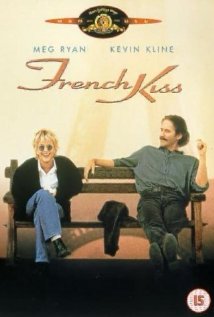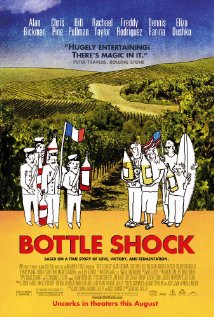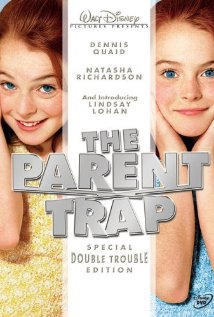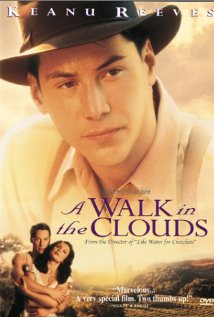A Bid To Regulate Wine Out of the Movies
 Up on the big screen we watch a scene in a movie where two parents sit at their kitchen table and discuss the dilemma of whether or not to purchase and move into a home that is said by many to be haunted. It’s a beautiful 100 year-old home in the New Hampshire countryside, away from the bustle and distractions of their current big city home, a perfect location in which to raise their son and daughter. They can afford it. But the transition to country life, not to mention the whole “ghost” thing is a bit off-putting.
Up on the big screen we watch a scene in a movie where two parents sit at their kitchen table and discuss the dilemma of whether or not to purchase and move into a home that is said by many to be haunted. It’s a beautiful 100 year-old home in the New Hampshire countryside, away from the bustle and distractions of their current big city home, a perfect location in which to raise their son and daughter. They can afford it. But the transition to country life, not to mention the whole “ghost” thing is a bit off-putting.
As they discuss their options a meal of Chinese delivery, they sip on a glass of wine that, by the looks of the bottle on the table is a well-known California brand.
There is no violence in this movie. No nudity. It’s a comic drama about a family trying to get a hold of their life, but hindered by the demands of country life and a ghost or two.
This movie must be rated R some say because there is a depiction of alcohol being consumed.
This is the conclusion of some based on a new study now being reported on widely and recently published in JAMA Pediatrics that shows that between 1996 and 2009, the amount of time depicting drinking in the movies and the number of alcohol brands depicted in movies has increased. Meanwhile, instances of smoking has decreased, particularly since the 1998 Master Settlement Agreement between tobacco companies and U.S. states that successfully stopped the tobacco industry from paying for its products to be shown on-screen.
David Jennigan, head of the Center on Alcohol Marketing and Youth responded to these findings this way:
“These results are of great concern. In movie reality, it seems like every occasion is right for a drink…This whole conversation is about normalization of alcohol use. Young people are particularly vulnerable to the message that drinking is everywhere….The notorious thing you find in movies and in TV is heavy drinking without consequences,” Jernigan said. “It leaves it up to parents to tell the consequences story.”
The problem here is that neither Mr. Jernigan nor the actual study provides us with any context where alcohol in film or its alleged impact on youth is concerned. Is the scene of the movie couple I describe above equally able to influence youth to drink as a scene in which 17 year-olds go on a booze-fueled joy ride in a parents car and land up happily at home afterwards?
The fact is, there is no evidence that suggests that alcohol depiction in films do anything to influence youths to drink. Still, for some the very existence of alcohol in films is bad. Very bad. What worries me and should worry others is the conclusion drawn by Brett Smith writing about this study for RedOrbit:
“Becaus e the risk for developing a serious drinking problem increases the earlier an individual starts consuming alcohol, the establishment of a cause-and-effect relationship between alcohol in movies and teens could have major implications. Even if that relationship is never established, concern over the welfare of teens could drive a similar agreement to the MSA or set of restrictions that limit the depictions of alcohol on film since self-regulation of the industry appears to be having the reverse effect.”
e the risk for developing a serious drinking problem increases the earlier an individual starts consuming alcohol, the establishment of a cause-and-effect relationship between alcohol in movies and teens could have major implications. Even if that relationship is never established, concern over the welfare of teens could drive a similar agreement to the MSA or set of restrictions that limit the depictions of alcohol on film since self-regulation of the industry appears to be having the reverse effect.”
The authors of the new study, a team associated with the Norris-Cotton Cancer Center, had some suggestions regarding alcohol and film:
• Movies receive ratings of R if they “depict drinking in contexts that could increase curiosity or acceptability of unsafe drinking.”
• No product placement money should be permitted for movies rated for a youth audience and that paid product placement and names of movies and television shows with such should be reported for transparency.
If possible, I’d like to be on the panel that determines what kind of scenes might “increase curiosity” of drinking. Certainly the film “Bottle Shock” about the 1976 Paris Wine Tasting would have to now be rated R, wouldn’t it? So would “Parent Trap”, “A Walk in the Clouds” and “French Kiss”.
The demonizing of alcohol has continued unabated since the end of Prohibition in 1933. Yet, because of how it is used, wine tends not to come in for as much demonizing as spirits and beer. Yet, when regulations on alcohol’s used are contemplated, there is usually no acknowledgement of the difference in the way wine is used. If this or future studies do in fact lead to actual regulation or calls for regulation, the wine industry and wine drinkers should fight hard against it. For now, perhaps there is no worry. It’s only a matter of the ground work being laid. But after that….folks like Mr. Jernigan may just get his way.

I guess it comes down to your view of films: Do they influence or merely reflect society? For a long time now, there has been a parallel argument about the amount of gun violence in ‘entertainment’ and the possible effects on violence in society. Let me say that I am a proponent of strong gun control, but how much does the violence on the screen spill over into society? As far as I know, there has not been any credible study that would indicate what we (or children) see on the screen has any impact on the way they behave on a day-to-day basis.
DrunkMan,
One thing we do know is that pop culture and movies do impact various aspects of society. Where wine is concerned, just look at what happened after the movie “Sideways” came out. Now, I happen to think the impact was good. The problem is that there are a number of people who think the impact of “Sideways” was a disaster simply because it promoted and increase in wine drinking.
This is absurd. You can show omnipresent guns in a PG13 movie, but somebody wants to complain that “drinking is everywhere?”
You know what — drinking IS everywhere. It’s a legal, delightful part of a healthy adult lifestyle.
Fortunately it sounds like this guy is just a crank. The NTSB worries me; this guy, at this point, doesn’t.
Blake,
Yes, absurd it is. Yet consider this guy runs an association/think tank that is funded by folks that think like him and support his efforts. Though I agree the NTSB proposal is certainly more harmful to both business, consumers and society.
Our job as adults is to model socially appropriate behavior for the next generation. This would include depicting moderate alcohol consumption by adults in film as perfectly acceptable in a civilized society. Therefore, a distinction should be made between promoting responsible consumption of alcohol by adults vs. binge drinking by adolescents in mass media. If a movie glamorizes frat party keg stands then it deserves a more restrictive rating. The whole push for tighter movie ratings is obviously being pushed by over zealous conservatives that need to reconsider the implications of their poorly thought out agenda.
I believe that Jennigan is missing a golden opportunity to not blame the current troubles of Lindsay Lohan on the time she spent at Staglin filming “Parent Trap”…
So am I to believe that if this was a bottle of Coca-Cola with the name blurred out or made to look generic, I might end up with a weight problem because I am going to go home and start drinking it all the time? I think that any one who puts that much emphasis on what people are consuming on film, especially when it is not the focal point or main action of the scene, needs to take a step back and put things in context. Seriously.